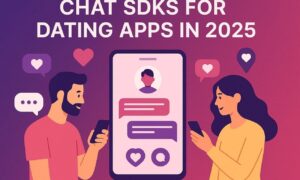Are you curious about the mysterious world of app development and how these tech wizards manage to turn their creations into cash-generating machines? Well, get ready to unveil the secrets! In this eye-opening blog post, we’re going to take you on a journey behind the scenes of app monetization. From in-app purchases and subscriptions to ads and sponsorships, we’ll unravel all the strategies that savvy app developers employ to transform their passion projects into profitable ventures. Get ready for a deep dive into the fascinating realm where creativity meets commerce—it’s time to discover how app developers actually make money!
Introduction to App Development
As someone who’s interested in app development, you’re probably wondering how developers make money off of their apps. There are a few different ways that developers can monetize their apps, and we’re going to go over a few of them here.
In-app purchases are one way that developers can make money from their apps. This is when users can buy additional content or features from within the app itself. This is a popular option for games, where players can buy new levels or items, but it can be used for other types of apps as well.
Another way to make money from an app is to offer it for free and include ads. This is how many free apps make their money, and it can be effective if done right. The key is to not bombard users with too many ads, as that will just lead to them uninstalling the app.
Some developers choose to charge for their apps upfront. This is less common than the other options, but it can still be successful if you have a desirable app that people are willing to pay for.
Methods of Monetization
There are a number of ways that app developers can monetize their products. The most common method is through in-app purchases, which allow users to buy virtual goods or unlock new features within the app itself. This can be done either as a one-time purchase or as a recurring subscription.
Another popular method is through advertising. This can be done either through banner ads that are displayed within the app or through interstitials, which are full-screen ads that are shown between sections of the app. Developers can also offer sponsorships, where a company pays to have their brand featured prominently within the app.
Some developers choose to sell their apps outright. This can be done either through an online marketplace such as the App Store or Google Play or directly to businesses that are looking for bespoke solutions for their employees or customers.
Advertising
Advertising is one of the most popular ways for app developers to make money. By displaying ads in their apps, developers can generate revenue from each impression or click on the ad. Advertising can be a great way to monetize an app, but it’s important to understand how it works and how to optimize your ad placements to maximize revenue.
When it comes to advertising, there are two main types: Display advertising and interstitial advertising. Display advertising is static content that appears in an app, often in the form of banner ads. Interstitial advertising is full-screen content that appears between sections of an app or game, typically during a transition period. Both types of ads can be effective, but interstitial ads tend to be more intrusive and can disrupt the user experience if not placed properly.
To get started with advertising, developers need to sign up for an ad network and integrate their app with the network’s SDK. Ad networks serve as middlemen between advertisers and publishers (app developers), connecting them and helping them manage campaigns. Once your app is integrated with an ad network, you’ll need to place ad units within your app where you want the ads to appear. Ad units come in various sizes and formats, so you’ll need to experiment to find what works best for your app and users.
It’s also important to keep in mind that users can have different reactions to ads depending on their age, location, and gender.
In-App Purchases
In-app purchases have become a popular way for app developers to make money in recent years. By offering users the ability to purchase virtual goods or unlock additional features within an app, developers can generate revenue without having to rely on advertising.
However, making money from in-app purchases is not as simple as just putting up a “buy” button. In order to get users to actually spend money within an app, developers must carefully design and balance the game mechanics to create a compelling and addictive experience.
The best in-app purchase models are those that offer users something they truly value and are willing to pay for. This could be anything from bonus levels or virtual currency to exclusive content or early access to new features.
Developers must also ensure that in-app purchases are integrated seamlessly into the overall game or app experience. Users should never feel like they are being “nickel and dimmed” and should always be given the option to opt out of spending money if they so choose.
Designing a successful in-app purchase model is all about creating value for users and giving them a positive and rewarding experience that keeps them coming back for more.
Subscription Models
There are a number of ways that app developers can make money from their creations. One common method is to offer a subscription model, whereby users pay a monthly or annual fee to access the app’s content or features.
This type of revenue stream can be particularly beneficial for apps that offer ongoing content or services, such as news apps or fitness tracking apps. It allows developers to generate recurring revenue, which can help stabilize their businesses and ensure long-term success.
There are a few things to consider when implementing a subscription model, such as the price point and the value proposition for users. But if done correctly, it can be a great way to monetize an app and keep users engaged in the long term.
Paid Apps
The app market is growing at an unprecedented rate, with new games and utility apps being released every day. With so much competition, it’s no wonder that many developers are struggling to make money from their apps. So how do the most successful app developers actually make money?
There are a number of ways to monetize an app, but the most common and effective method is through in-app purchases. This is where users can buy virtual goods or unlock premium features within the app itself. In-app purchases are typically handled through an in-app billing system, which allows developers to take a cut of each sale.
In order to get people to actually make in-app purchases, however, developers need to ensure that their app is of high quality and offers value for money. This means creating an engaging and addictive user experience that will keep people coming back for more. Once an app has a large and loyal following, developers can start to generate significant revenue from in-app purchases.
Another way to monetize an app is through advertising. This can be done by displaying banner ads within the app or serving interstitial ads between levels or game sessions. Developers typically get paid on a cost-per-click basis, meaning they earn a commission each time someone clicks on an ad. However, this method of monetization can often be intrusive and disrupt the user experience, so it needs to be used carefully.
Strategies for Successful Monetization
There are a number of strategies that developers use to monetize their apps. The most popular method is in-app purchases, where users can buy virtual goods or premium features within the app. This can be a great way to generate revenue, but it’s important to strike a balance between offering too much and too little. Another common strategy is advertising, which can be either banner ads or interstitials (full-screen ads that appear between content). Developers can also charge for downloads or offer subscriptions for access to premium content.
In-app purchases are the most popular monetization method for mobile apps.
According to a report from App Annie, in-app purchases accounted for 90% of all consumer spending on iOS and Google Play in 2018. In-app purchases can take many different forms, such as buying virtual currency, upgrading to a premium version of an app, or purchasing physical goods from within an app.
The key to successful in-app purchases is striking a balance between offering too much and too little. If you offer too many in-app purchase options, it can be overwhelming for users, and they may not know which one to choose. On the other hand, if you don’t offer enough options, users may get bored and move on to another app. It’s important to find the right mix of in-app purchase options that will meet the needs of your users while still generating revenue for your business.
Advertising is another common market.
Research Your Target audience.
As an app developer, it is important to have a firm understanding of who your target audience is and what needs they have that your app can address. There are a number of ways to research your target audience, including online surveys, focus groups, and user interviews.
When conducting online surveys, be sure to ask questions that will give you insights into who your target audience is, what needs they have, and how likely they are to use your app. Focus groups can also be a valuable tool for understanding your target audience. By bringing together a group of people who fit your target demographic, you can get feedback on everything from the design of your app to its potential usefulness.
Don’t forget to talk to actual users! User interviews can be conducted in person or online, and they provide an opportunity to get first-hand feedback on everything from the user experience to the overall value of the app. When combined with other research methods, user interviews can give you a well-rounded view of who your target audience is and what they need from your app.
Differentiate Your Product from competitors.
As the app market becomes increasingly saturated, it is more important than ever for developers to differentiate their products from competitors. There are a few key ways to do this:
- Offer unique features that solve specific problems for your target audience.
- Create a brand that resonates with your target audience and differentiates you from the competition.
- Focus on delivering an exceptional user experience that keeps users coming back for more.
Incorporate Multiple Monetization strategies.
There are a number of ways to monetize your app. The most common is through in-app purchases, where users can buy virtual goods or premium features within the app. Other popular methods include advertising, subscriptions, and paid downloads.
In-app purchases are the most common form of monetization for mobile apps. According to a report by App Annie, in-app purchases accounted for 87% of total app revenue in 2018. In-app purchases can be used to sell virtual goods, such as coins in a game, or premium features, such as ad-free listening on a music streaming app.
Advertising is another popular way to monetize apps. AdMob by Google is the most popular platform for mobile app advertising, and it allows developers to display banner ads, interstitials, and video ads within their apps. Advertisers pay when users click on the ads or watch the videos.
Subscriptions are another common method of monetization, particularly for apps that offer content or services on a recurring basis, such as news articles or cloud storage. Users typically pay a monthly or yearly fee to access the content or service.
Paid downloads are a less common but still viable option for monetizing apps. With this model, users pay a one-time fee to download and install the app on their device. This is typically used for more expensive apps with significant up-front costs, such as design tools or productivity suites.
Conclusion
App development is a complex business, but it can be incredibly rewarding for those who are willing to put in the hard work and effort. With some creative thinking and dedication, you too could become an app developer and make money from your apps. By understanding how people use their devices, what trends are popular in the marketplace, and staying up-to-date on new technology advancements that could improve user experiences with your app;, you can create an innovative product that will bring more users to download it and generate revenue to sustain your business operations.



































